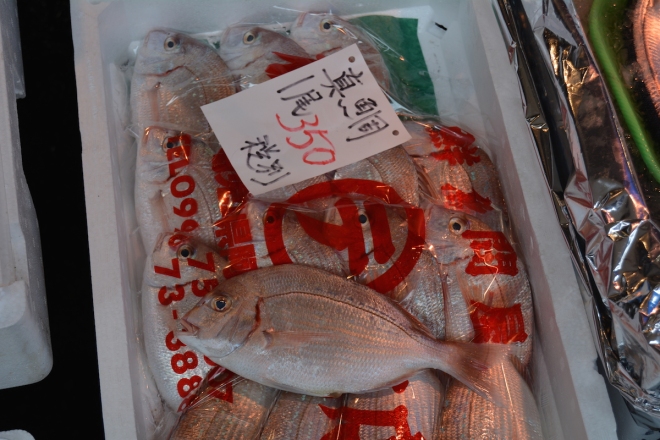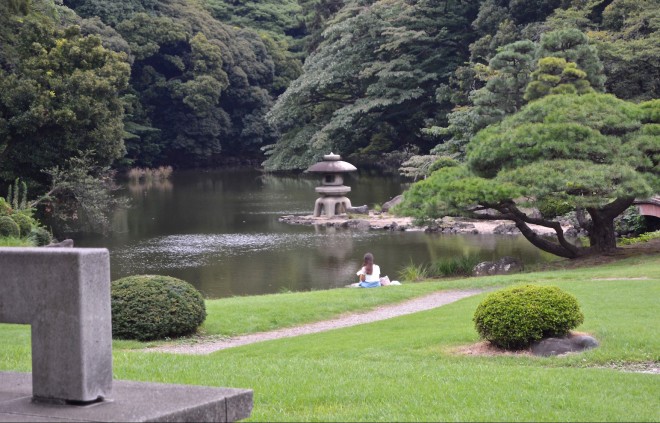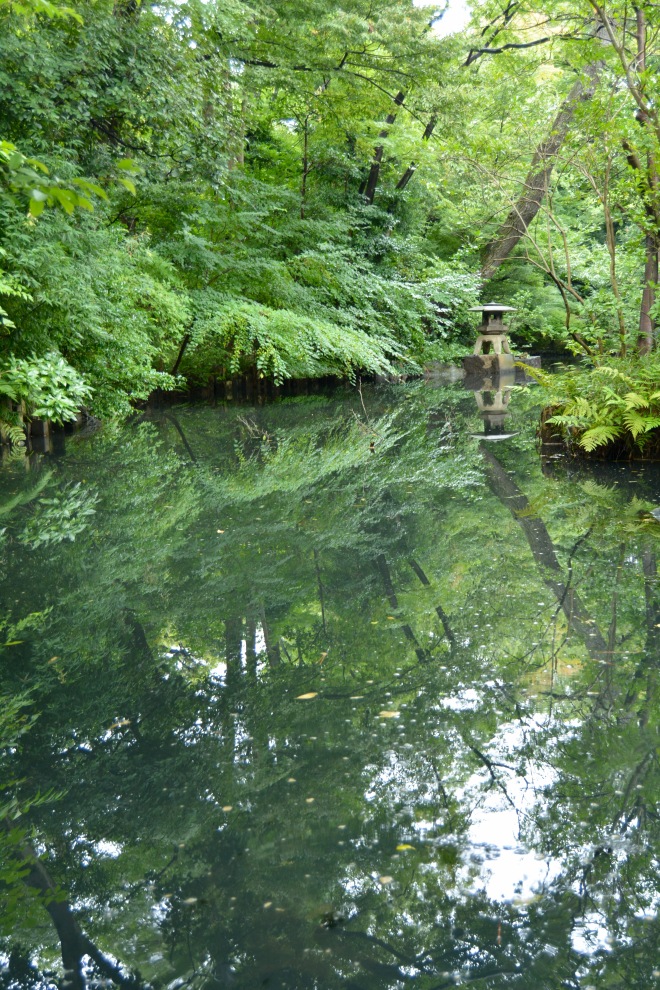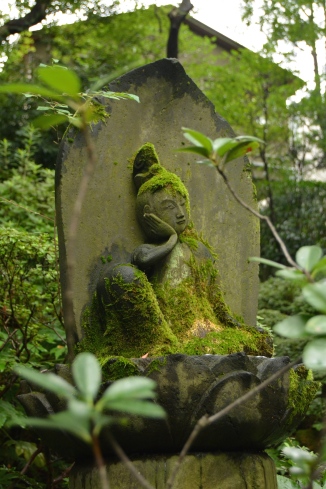TOKYO METRO
A polite hussle
Moving in silent masses
Train calls cut the air.
There’s a weekday uniform on Tokyo’s subways. Every man is wearing a white button down with black slacks — that’s just what they wear, regardless of age or profession. One man, however, is wearing navy pants. I wonder if this means something socially. Like maybe he has a blind date later, “Meet me at Bar Lennon in Shibuya at 7:00, I’ll be the man wearing navy pants”. Women all wear neutral colors, light blue blouses, grey skirts, khaki bottoms, sheer tights, (even though it’s 90 degrees out), clutching nude handbags as they queue in line.
It’s 8:30am on a Tuesday and although the guidebooks warned us not to venture into subway stations between 8:00am-9:00am for fear we’d be swept away in the herd of commuters, we’re willing to brave it. Sure we were confused by the two queues forming: one for the next train, one for the train after the next. And yes, it did take us almost half an hour to buy our metro cards then find the Ginza line. And fine, I did temporarily break a metro turnstile when I shoved my reusable card into the single-use slot (why are the cards the same size, Japan?), though the temporary break lasted a total of forty seconds, as a metro employee was there to help me out within actual seconds. I’m sure he was on his guard when he saw me coming, as a caucasian chick wearing a crimson dress in a sea of beige I was a walking red flag. But now here we are, joining the 8.7 million daily riders of the Tokyo metro.
TSUKIJI
Tunas on display
Carved by expert guided hands,
Shimmer shades of pink.
We were wide awake at 5:50am, 14 hours after landing in the country from a 13 hour non-stop flight from Seattle, which flew us through endless daylight. Disoriented and jet lagged, but here to see Japan dammit, our first go-to stop was Tsukiji Fish Market. It’s the biggest fish market in the world, with over 2,000 tons of fish and seafood passing through its doors daily.
The market’s big draw are the tuna auctions which admit 120 tourists each morning. At this time massive tunas chill on the floor while wholesalers and licensed buyers for restaurants and retailers inspect and bid on the tunas at their feet. We did not get to watch the auction. To get in on that action you’d need to start lining up around 3:00am, fingers crossed you’ll be one of the few that make it inside when the auction begins at 5:00am. Don’t get me wrong, I really wanted to see the auction. I’d love to see it. But I did mention we had just landed in Japan, right? So the chances of me getting just a few hours of sleep to see some frozen fish sale just wasn’t gonna happen.



We did wander around the outdoor market, eating as much food as we could handle and inspecting the tubs, barrels, and boxes full of foreign and mouth watering fare. In the end we spent hours weaving in and out of the same streets, eating these tasty bites:
- An opah fish which was cooked in front of us on a grill using a blowtorch, seasoned, and served on a stick.
- Oysters with a bit of mignonette thrown on them.
- Melon water ice.
- Curry bread, which is deep fried dough stuffed with savory curry and sprinkled with sugar. I referred to this as a “stew donut” until I learned its true name.
- A sushi tray from one of the dozens of sushi stands in the market.
The opah was amazing, the oysters were ok, the water ice was lovely, but I regret not trying other flavors the vendor was selling, such as “Wasabi Very Spicy” and “Shrimp”, and wonder still what the consistency of shrimp water ice would be like. Curry bread is a dinner and dessert in one, so what’s not to love there, but the sushi was completely meh. During our two week trip in Japan each time we tried to get sushi it wound up being some of the most boring eats we had abroad. Lesson learned is that you need to do some research, make some reservations, and open up your wallet, because being in Japan doesn’t mean you’ll just stumble upon some amazing raw fish.
JAPANESE GARDENS
Every blade of grass,
Joining millions just the same,
The stillest ocean.
I was giddy as I entered my first Japanese garden, and as soon as a never ending expanse of grass came into view I took off my shoes and ran around like a toddler who’s about to exhaust themselves, then plopped down to begin a peaceful nap. You know what the pictures of these places don’t convey? That the grass is painful as shit to sit on. It’s manicured beyond immaculate, causing the short blades to act as 1,000 tiny shanks, which poked right through my dress.
While wandering around the Shinjuku garden I witnessed a girl reading by the lakeside, her pastel blue skirt splayed out on the surrounding grass. Soothing to behold, but I was wondered if she was screaming inwardly, or if she’d become immune to pain after years of reading in gardens.


In total we managed to visit three Japanese gardens throughout the city: the Imperial Palace Garden, the Shinjuku Gyoen National Garden, and the garden of the Nezu Museum. The Nezu Museum disappointmented me at first, as the main exhibition was “Listening to Paintings: Rain, Wind, Bird Songs, and Human Voices. Do you hear the sounds emerging from the pictures? Feel by looking closely.” The museum has over 7,000 objects in their collection, and the best exhibit the curators could come up with was inspired by their third grade teacher Ms. Lisa? That’s not to say the selected pieces weren’t beautiful, they were, but what’s next for an exhibit I wonder? “Things That Look Fuzzy” or “Night Time”? The mundane possibilities are endless.
Outside the garden made our museum outing completely worth the trip. It was absurdly green, extremely lush, and oddly empty. I had expected our voyages to these gardens to be packed with tourists, but despite visiting the country in August we had each space almost entirely to ourselves. Apparently you’re way more likely to find a foreigner in the fish market or wandering through Harajuku than you are to run into one in a Japanese garden. This is definitely not a complaint. If I had the choice of being alone among pseudo-nature or in a neighborhood in one of the most populous cities in the world, I’m taking the garden. Because being alone in Ginza would be horrifying, and likely for apocalyptic reasons.














Great photos and haiku’s!
LikeLiked by 1 person
Metro, Tsukiji, and gardens perfectly captured in haiku — my impressions exactly
LikeLike